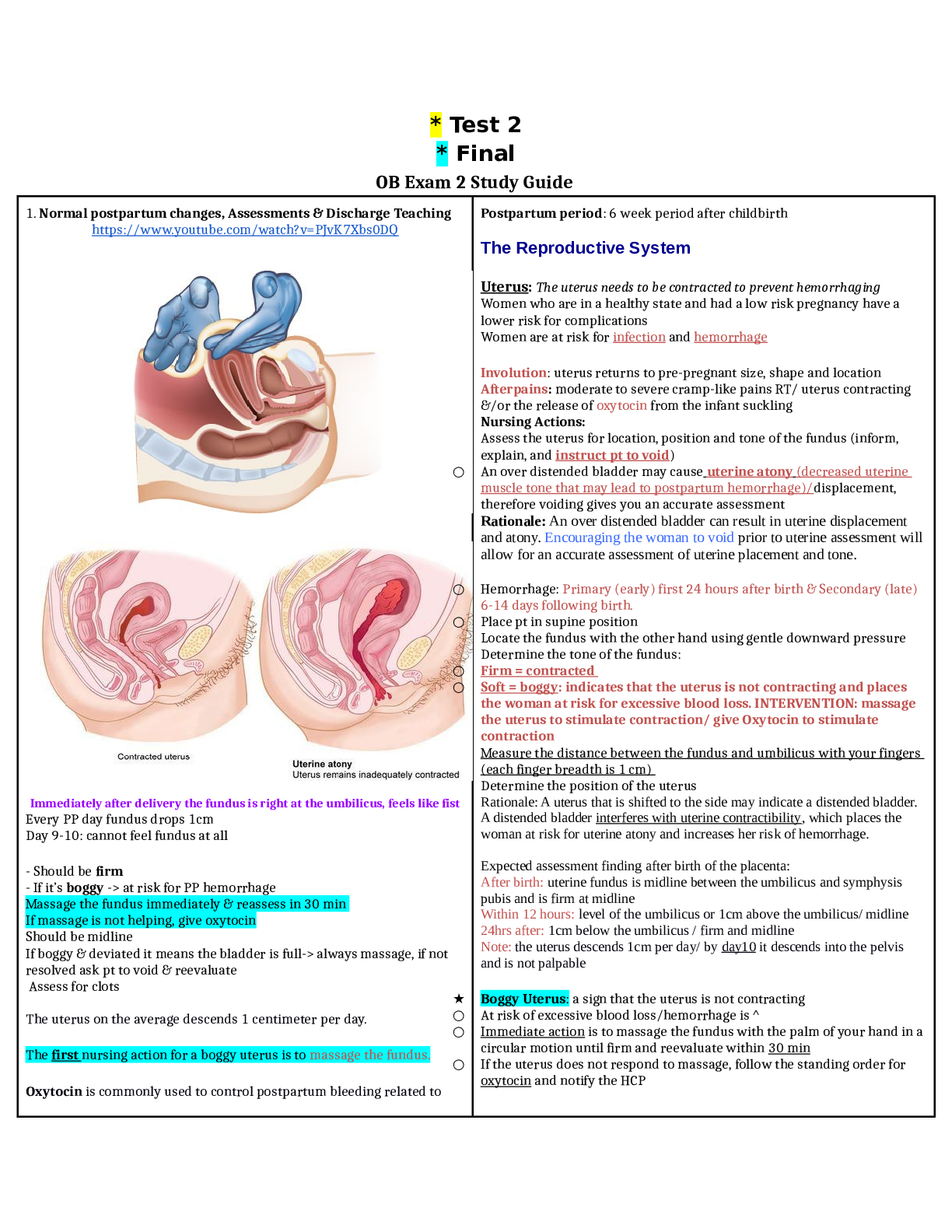*NURSING > QUESTIONS & ANSWERS > NR565 Week 2 Study Guide (Page 1) Chapter 1: The Role of the Nurse Practitioner as Prescriber (All)
NR565 Week 2 Study Guide (Page 1) Chapter 1: The Role of the Nurse Practitioner as Prescriber
Document Content and Description Below
NR565 Week 2 Study Guide (Page 1) Chapter 1: The Role of the Nurse Practitioner as Prescriber Roles and Responsibilities of APRN Prescribers APRN prescriber is responsible for the final decision on... which drug to use and how to use it. Degree of autonomy in this role and the breadth of drugs that can be prescribed vary from state to state based on the nurse practice act of that state. Nurse practitioner prescriptive authority is regulated by the State Board of Nursing for each state. • Advanced Knowledge o Additional knowledge, critical thinking, and assumption of a higher level of legal responsibility are required to assume the prescriber role o Knowledge of medicine, pharmacology, and nursing intertwine in the NP role o As a prescriber, it becomes the role and responsibility of the NP to determine the diagnosis for which the drug will be ordered, prescribe the appropriate drug, monitor the expected outcome of the drug, and incorporate a holistic assessment of the impact of disease and therapy on patient lives • Benefits of an APRN as Prescriber o Alternative treatment options are also part of the armamentarium that can be used to treat a given disorder and may interact with the pharmacotherapeutic intervention o APRN look at the big picture and consider alternative treatment options and lifestyle changes o Patients are looked at in a holistic approach and include the patient in decision making regarding their care. o NP practice may thrive under healthcare reform because of the demonstrated ability of nurse practitioners to control costs and improve patient outcomes Clinical Judgment in Prescribing • Prescribing drug results from: o Clinical judgment based on a thorough assessment of the patient and the patient's environment o Determination of medical and nursing diagnoses o A review of potential alternative therapies, and specific knowledge about the drug chosen and the disease process it is designed to treat o NPs factoring in the cost to the patient of the medication prescribed • Is there a clear indication for drug therapy? o In the age of health-care reform and increased awareness of the limitations of drugs, whether a medication is the best option for treatment has become an important question. • What drugs are effective in treating this disorder? o Several drugs may be effective in treating a condition, so which one is best for a particular patient? ▪ Even if only the most effective class of drug is considered, few classes of drugs include only one drug o How does one determine “best”; what are the criteria? Are there nationally recognized guidelines that can be used? ▪ The Agency for Health Care Quality (AHCQ), the National Institutes of Health (NIH), and many specialty organizations publish disease-specific treatment guidelines that include both pharmacological and nonpharmacological therapies ▪ Consult nationally recognized guidelines for disease management • What is the goal of therapy with this drug? o What is the best drug to achieve treatment goals? NR565 Week 2 Study Guide (Page 2) ▪ Various goals are possible in the choosing of therapy • Under what conditions is it determined that a drug is not meeting the goal and a different therapy or drug should be tried? o At the onset of therapy, the provider and patient should have a clear understanding of what outcome or goal is expected of the medication prescribed o Follow-up and monitoring times are established to see how well treatment with the drug is meeting the goal • Are there unnecessary duplications with other drugs that the patient is already taking? o The patient’s medication history should be reviewed at each encounter to detect duplications or medications that may be discontinued • Would an OTC drug can be just as useful as a prescription drug? o Increasing numbers of drugs are being moved from prescription to over-the-counter (OTC) status • What about cost? o Who will pay for this drug? Can the patient afford it? Will the cost of the medication affect adherence to the treatment regimen? ▪ Cost is an issue for several reasons • Many insurance policies do not cover the cost of drugs or only provide partial coverage, so the patient must pay “out of pocket” • The newer the drug, the more likely the cost is too high based on the drug manufacturer’s need to reclaim research and development costs while the corporation still holds the patent on that drug • Newest is not always best, and condition of cost is a major factor in choosing between newer drugs and ones that have been around long enough to be available in generic form • Many insurance plans have larger copays for name-brand drugs than for generic medications • Multiple national retail pharmacies have developed $4 prescription formularies • Awareness of what is on the local discount formulary may save the patient hundreds of dollars in prescription costs and may increase compliance • Factors likely to lead to poor adherence include a drug that is expensive in relation to a patient's finances, a drug that must be taken daily as part of a complex regimen, and a drug that is not covered by insurance. • Where is the information to answer these questions? o Wide array of professional literature that ranges from the well-reputed journals to literature from specialty and professional organizations, the multitude of computerized drug databases Collaboration with Other Providers Collaborate with physicians, pharmacists, podiatrists, mental health specialists, therapists, and other providers, including APRNs who are not NPs, physician assistants (PAs), and other nurses. • Physicians o Early in the development of the NP role, physicians were the teachers in the NP programs and accepted NPs as physician-extenders • Pharmacists o Profession of pharmacy requires graduate-level preparation for all pharmacists with the granting of a practice doctorate, the Doctor of Pharmacy (PharmD) o A PharmD can assist by offering expertise on the clinical management of patients, including available dosage forms, potential adverse reactions, and drug interactions • Other APRNsNR565 Week 2 Study Guide (Page 3) o Collaboration with other NPs and APRNs who have prescriptive privileges has two major advantages ▪ On a one-to-one basis dealing with individual patient issues, NPs and APRNs can share “clinical pearls” from their knowledge base and collaborate to improve the care of the patient ▪ Collaboration on issues related to scope of practice and prescriptive privilege at the state and national level is critical to obtaining and maintaining the autonomy of practice needed to provide optimal patient care • Physician Assistants o The focus of the PA's practice is similar to that of the physician, so both the APRN and the PA can benefit from interaction with each other in much the same way as from their interaction with physicians o Many PAs desire more autonomy in their practice, and the experience of APRNs in developing autonomy may be helpful • Nurses Not in Advanced Practice Roles o APRNs regularly collaborate with other nurse colleagues who are not in advanced practice roles o Some have specialized knowledge, such as Certified Diabetes Educators (CDEs) and Wound and Ostomy Care Specialists (WOCS) o These nurses and their assistants carry out the prescriptive orders of the APRN Autonomy and Prescriptive Authority More states are broadening and expanding the legal, reimbursement, and prescriptive authority to practice for all APRNs, including NPs. • Reimbursement o Reimbursement is evolving, with the Affordable Care Act rollout creating an opportunity for APRNs to address reimbursement parity o The reimbursement by third-party payers continues to be a practice barrier for many nurses in advanced practice • Drug databases o PharmGKB o WAITING FOR CLARIFICATION • Medication adherence o WAITING FOR CLARIFICATION Chapter 4: Legal and Professional Issues in Prescribing New Drug Approval Process Including Clinical Phases I-IV Costs a company approximately $2.6 billion. Takes 8.5 years on average for an experimental drug to travel from laboratory preclinical trials to FDA approval. • State One: Preclinical Research o Process of synthesis and extraction identifies new molecules with the potential to produce a desired change in a biological system o Produced through artificial synthesis or extracted from natural sources Biological screening and pharmacological testing use nonhuman studies pharmacological activity and therapeutic potential [Show More]
Last updated: 1 year ago
Preview 1 out of 39 pages
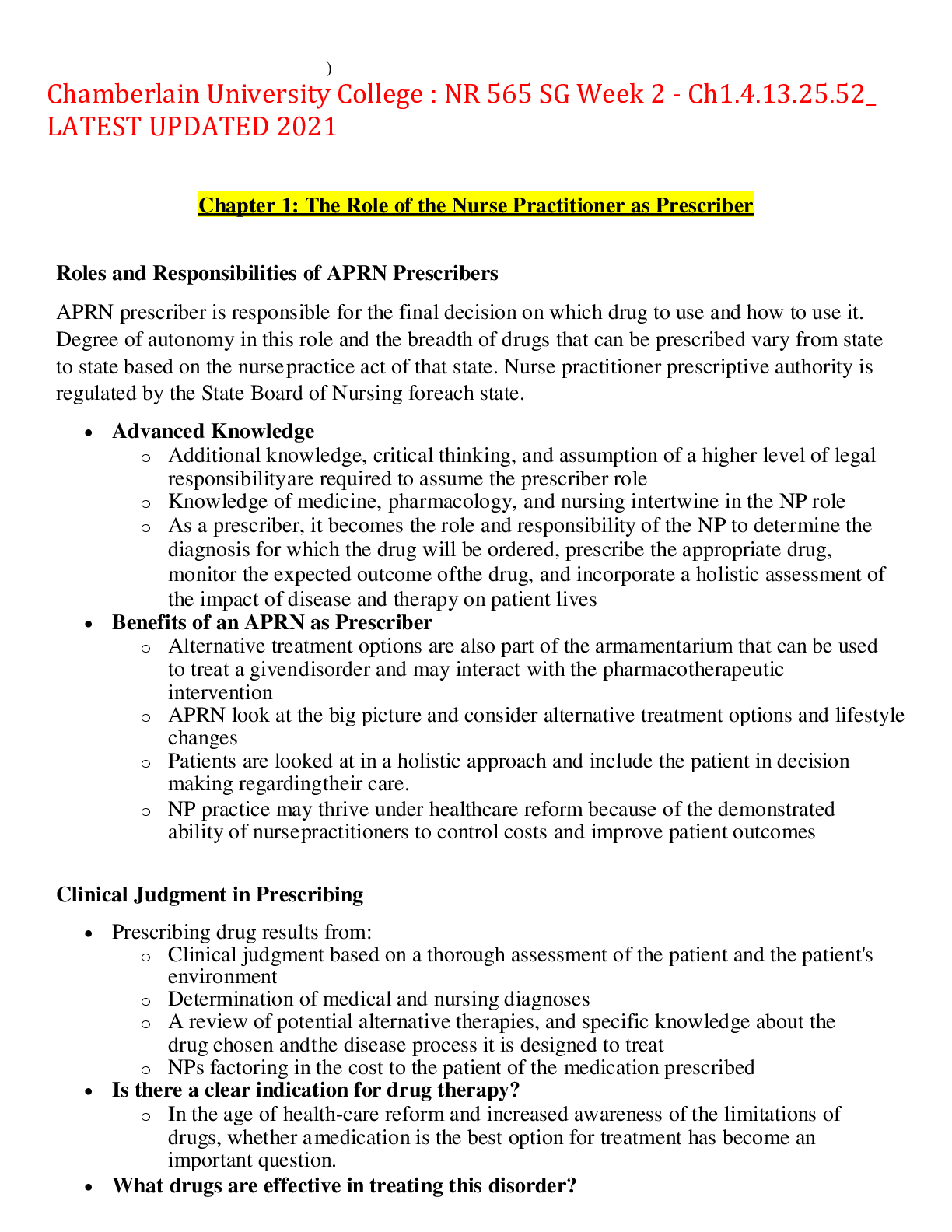
Reviews( 0 )
Document information
Connected school, study & course
About the document
Uploaded On
Jun 24, 2021
Number of pages
39
Written in
Additional information
This document has been written for:
Uploaded
Jun 24, 2021
Downloads
0
Views
54


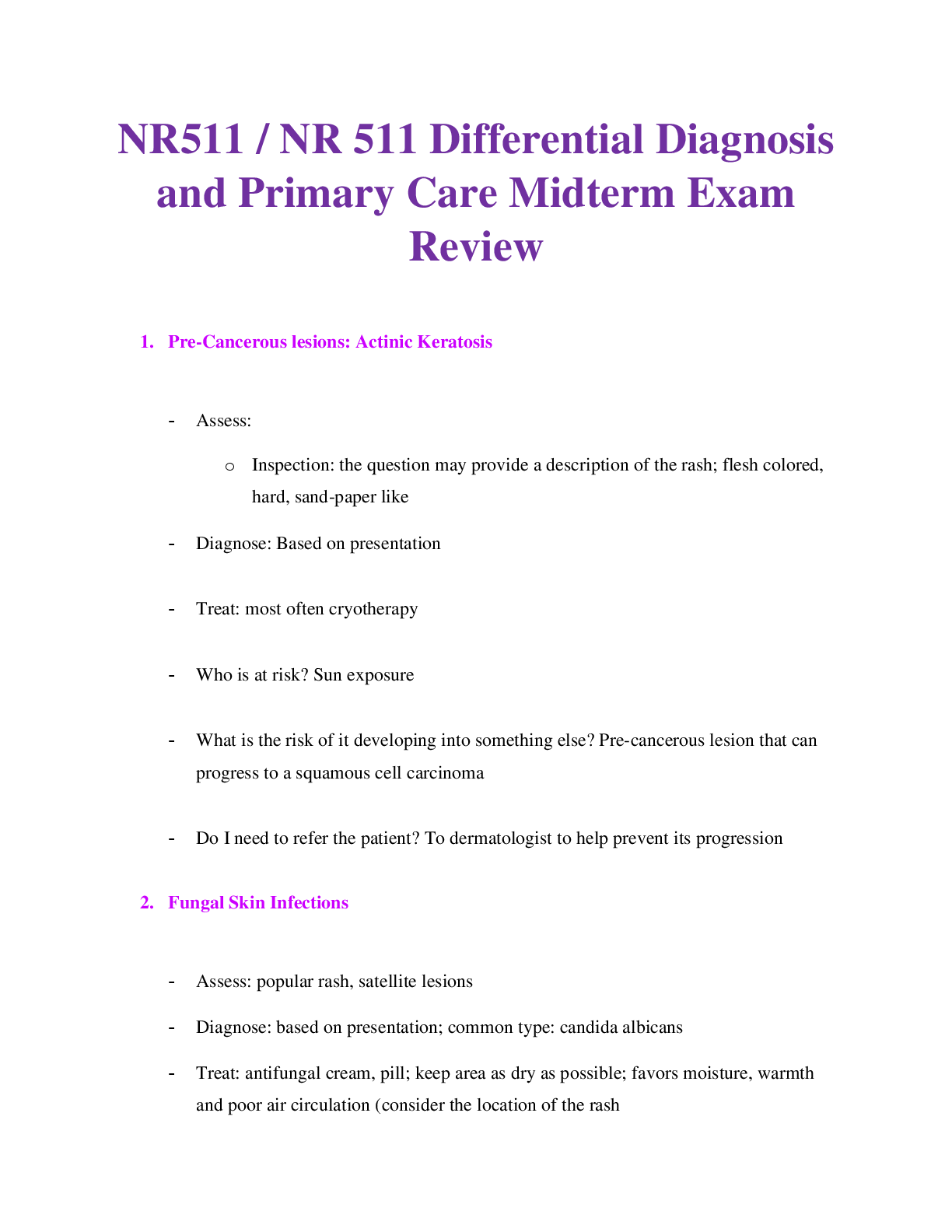
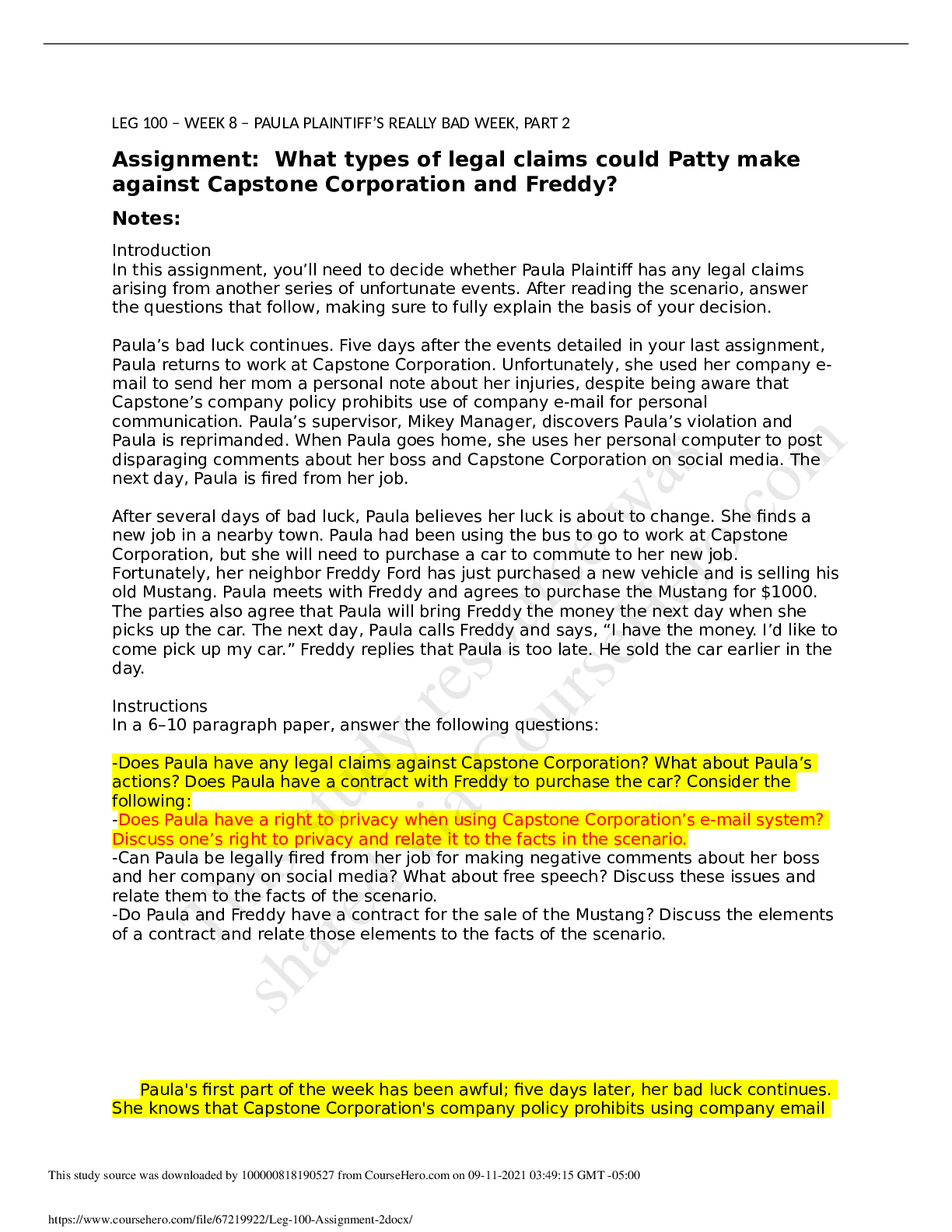
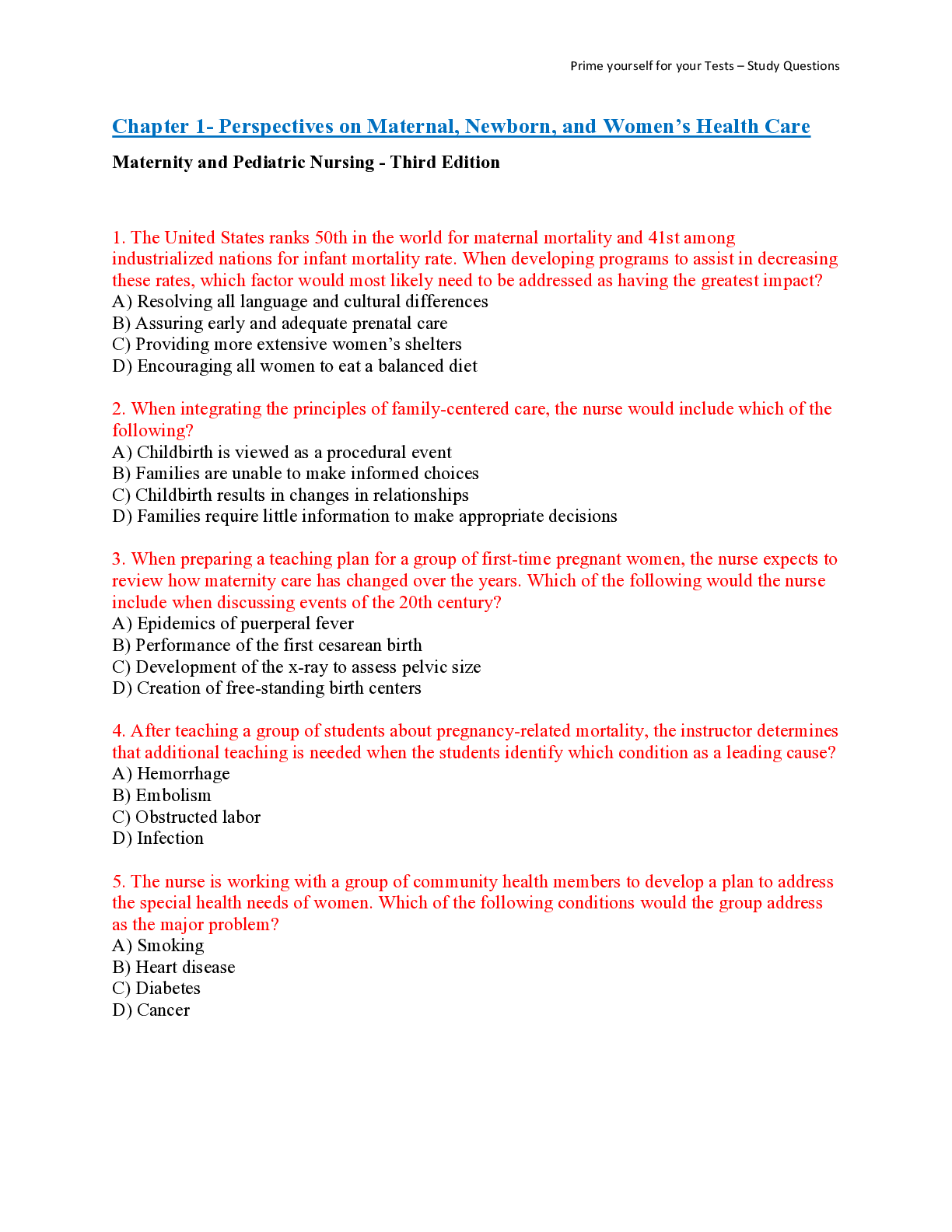
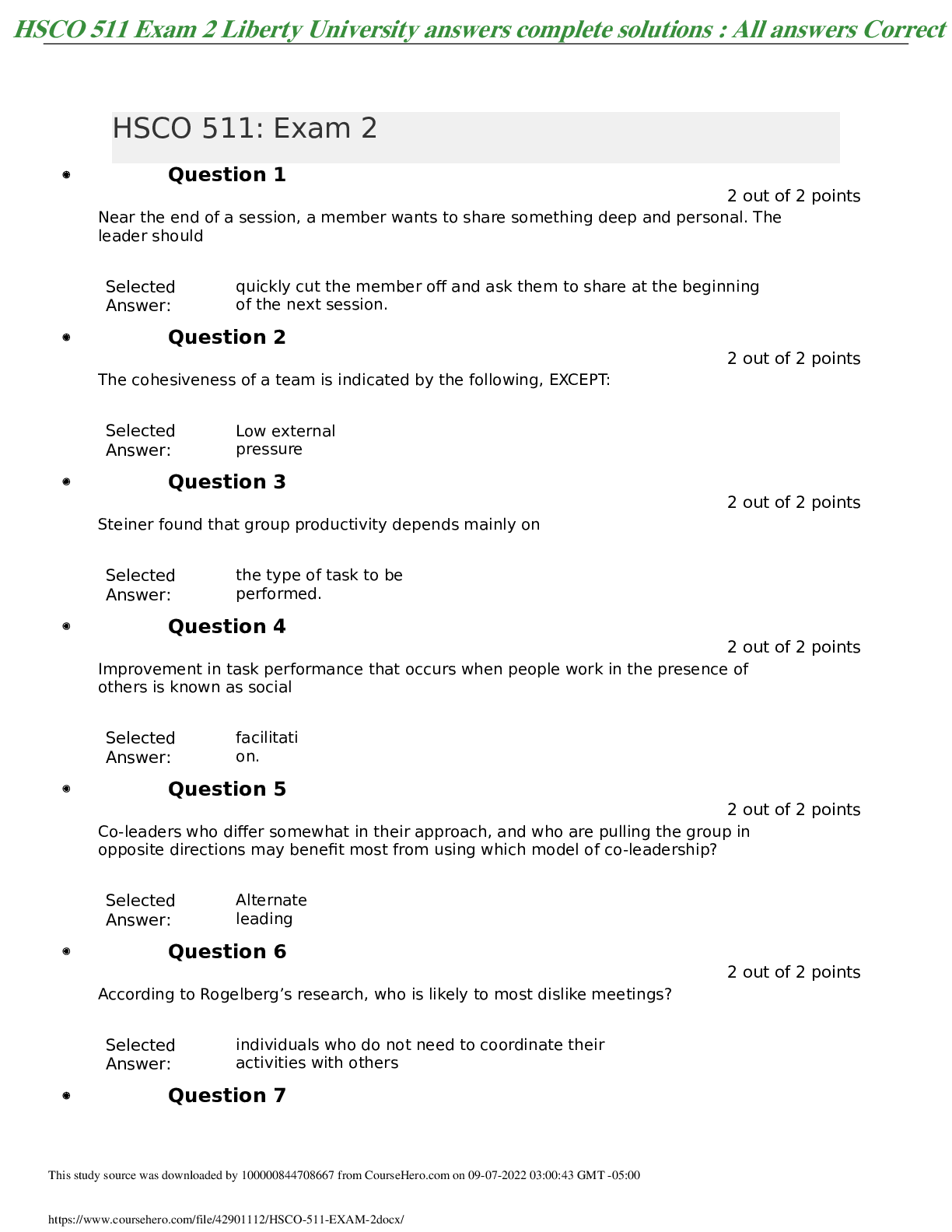
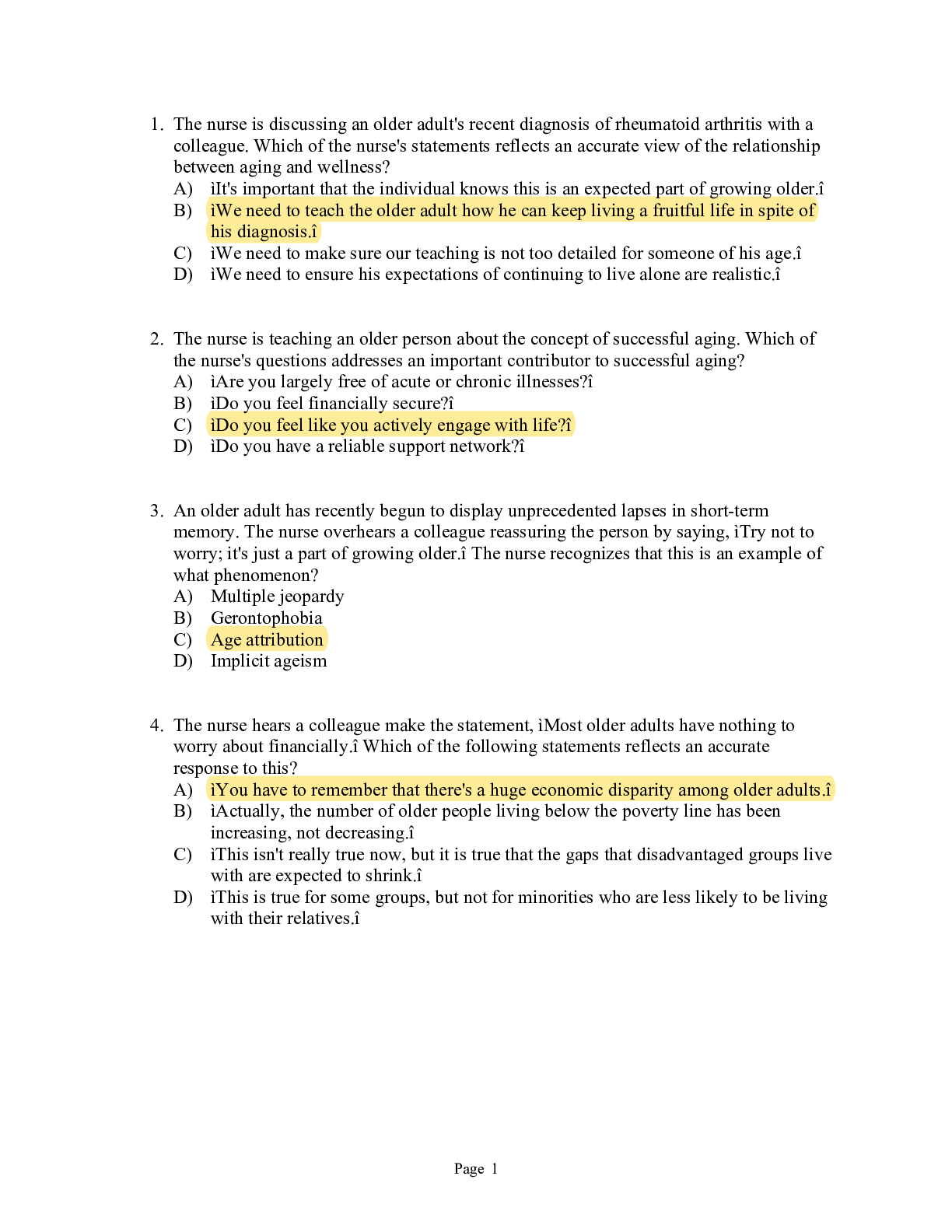

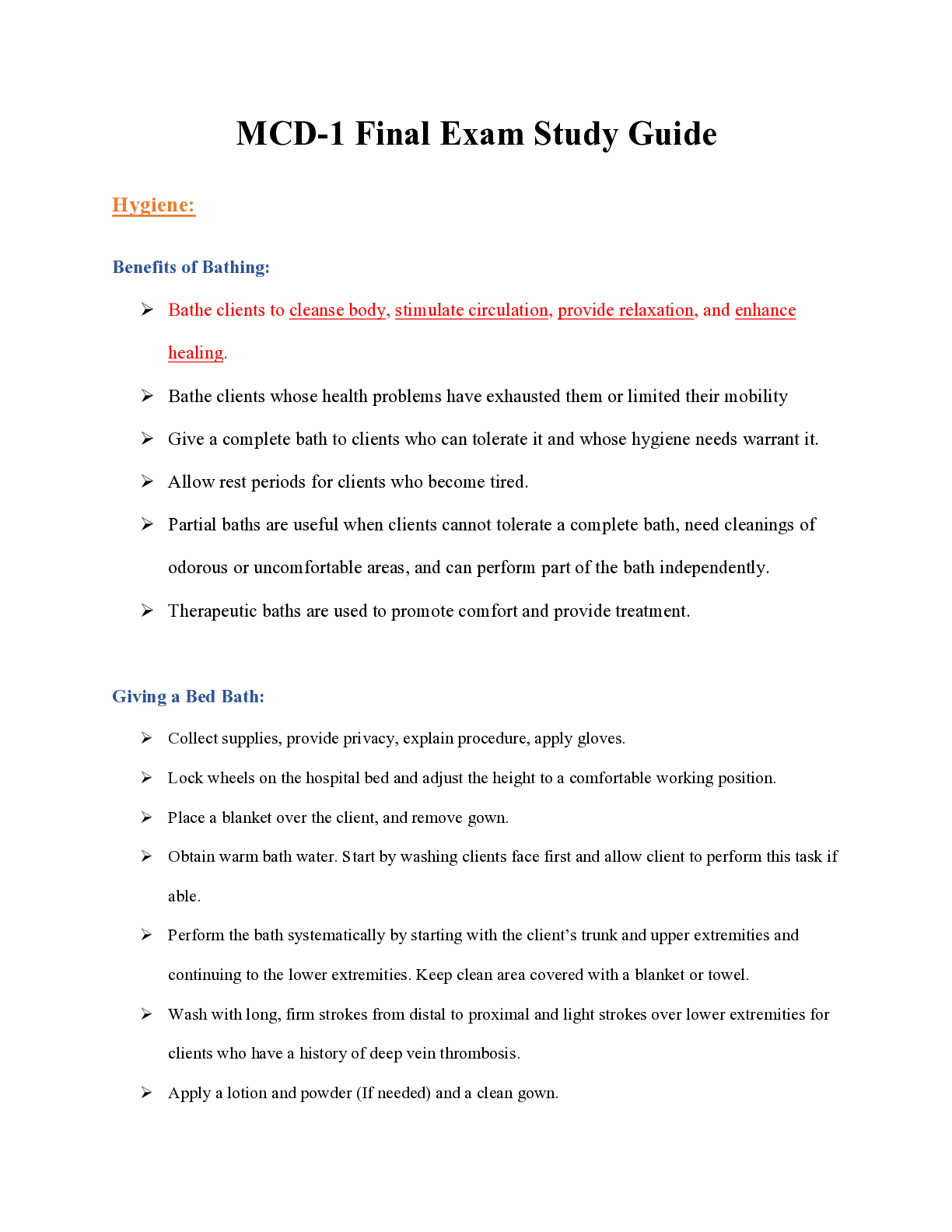

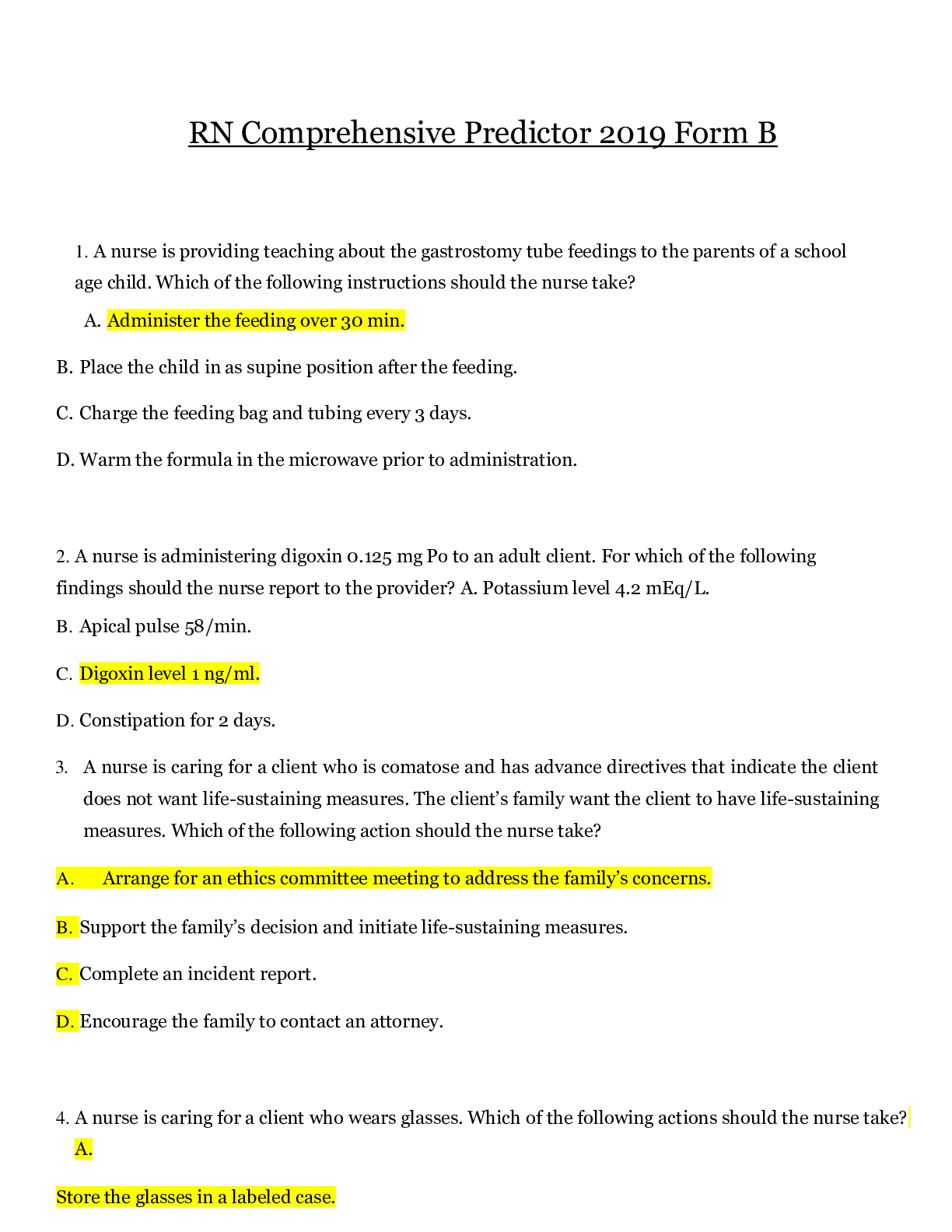

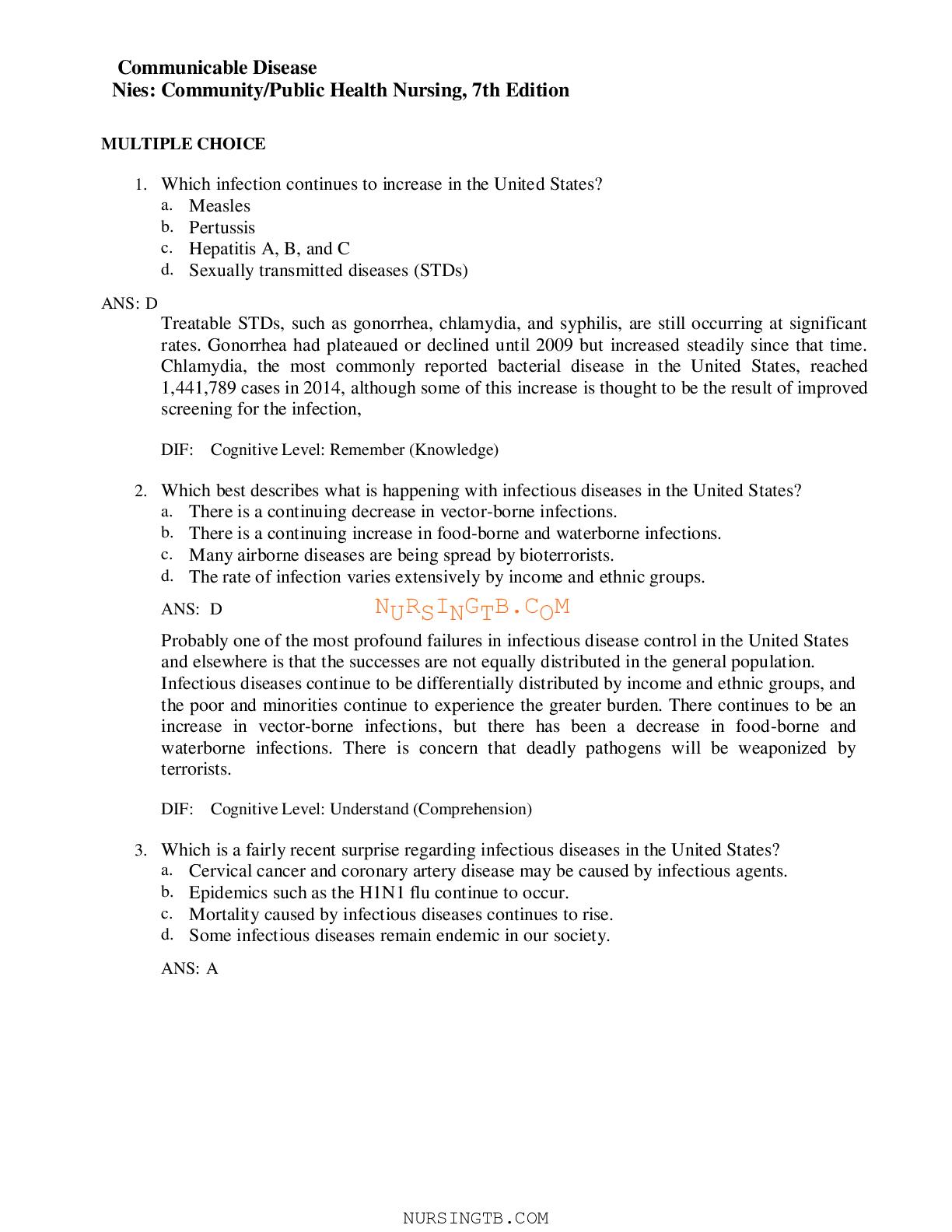
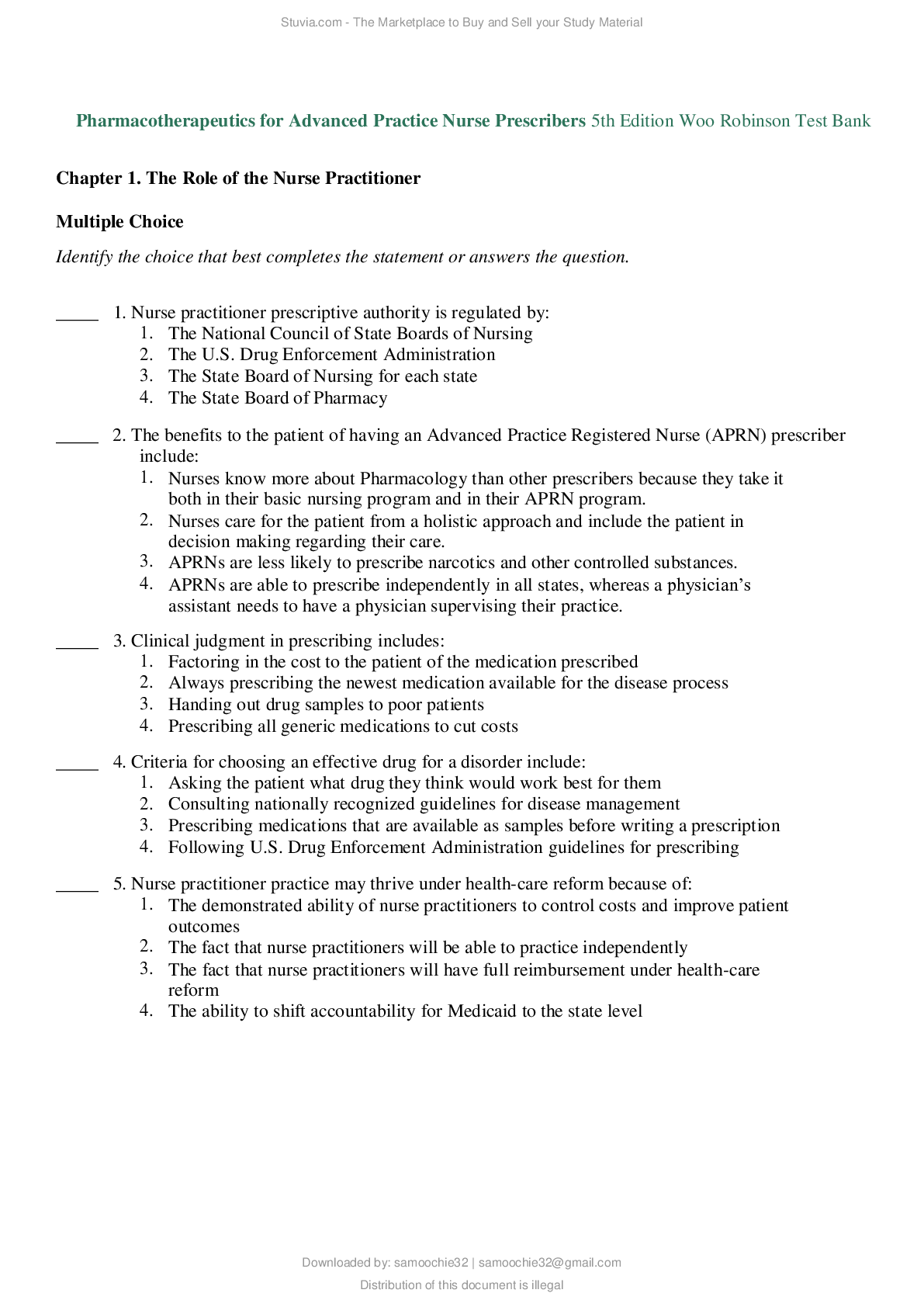

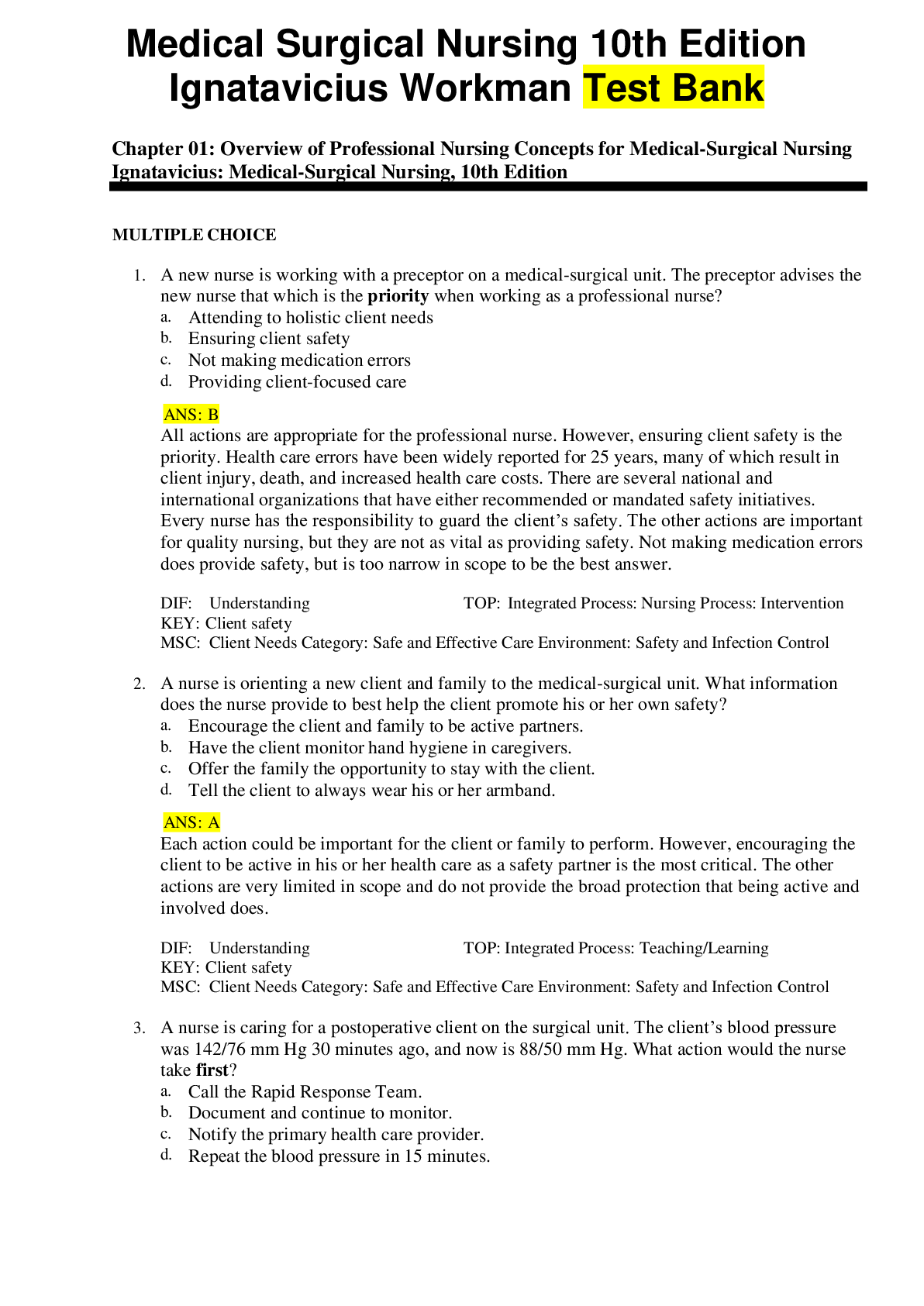
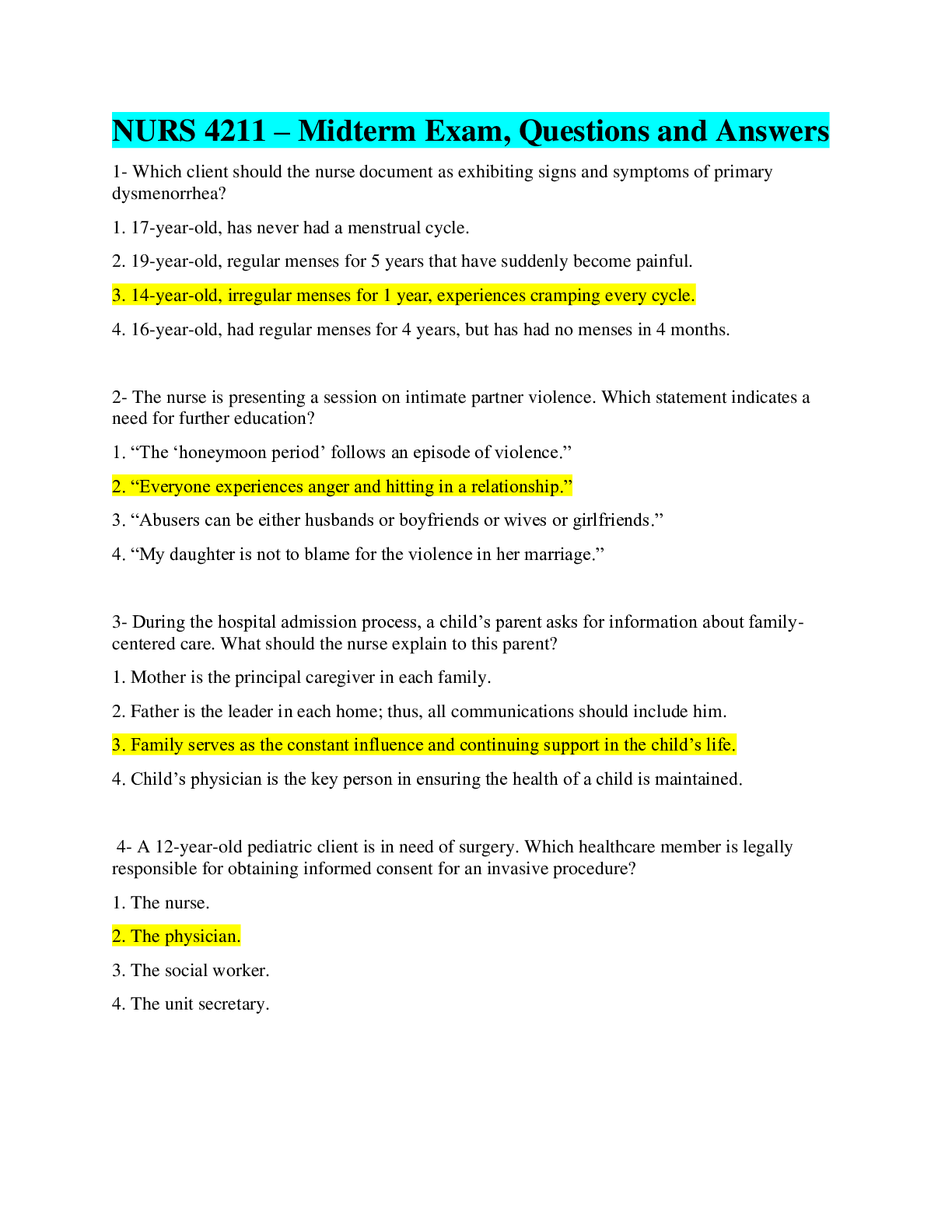
.png)


.png)
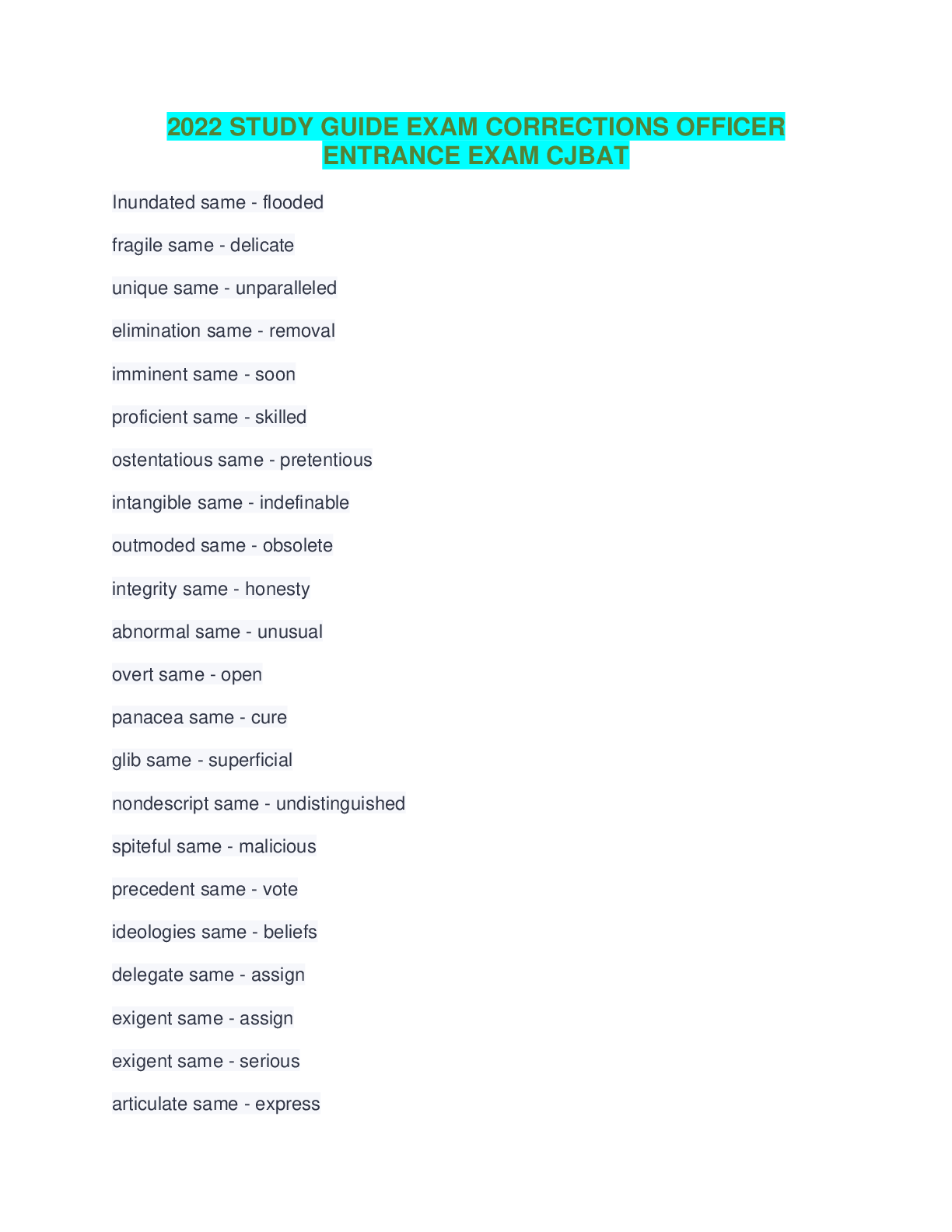
.png)
.png)
.png)
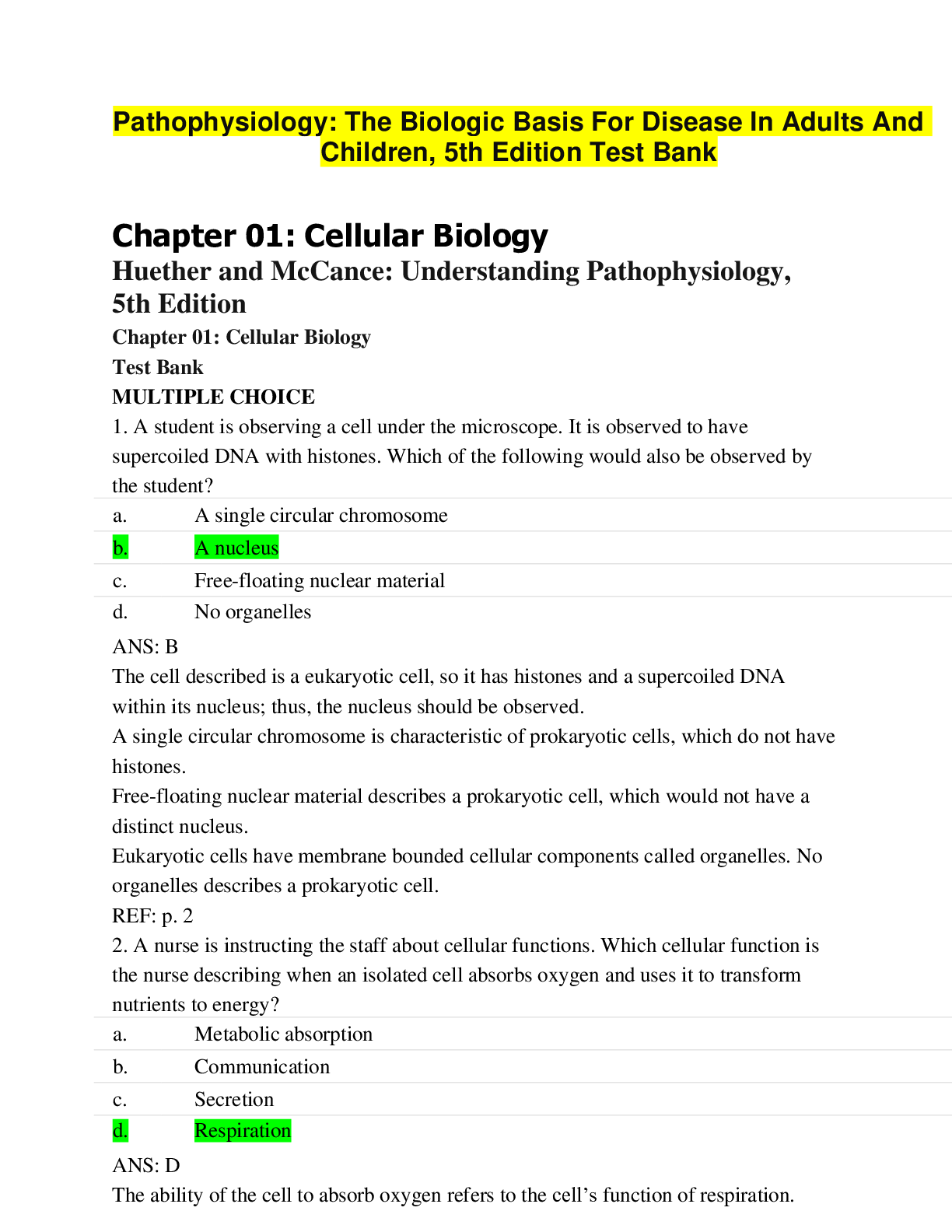




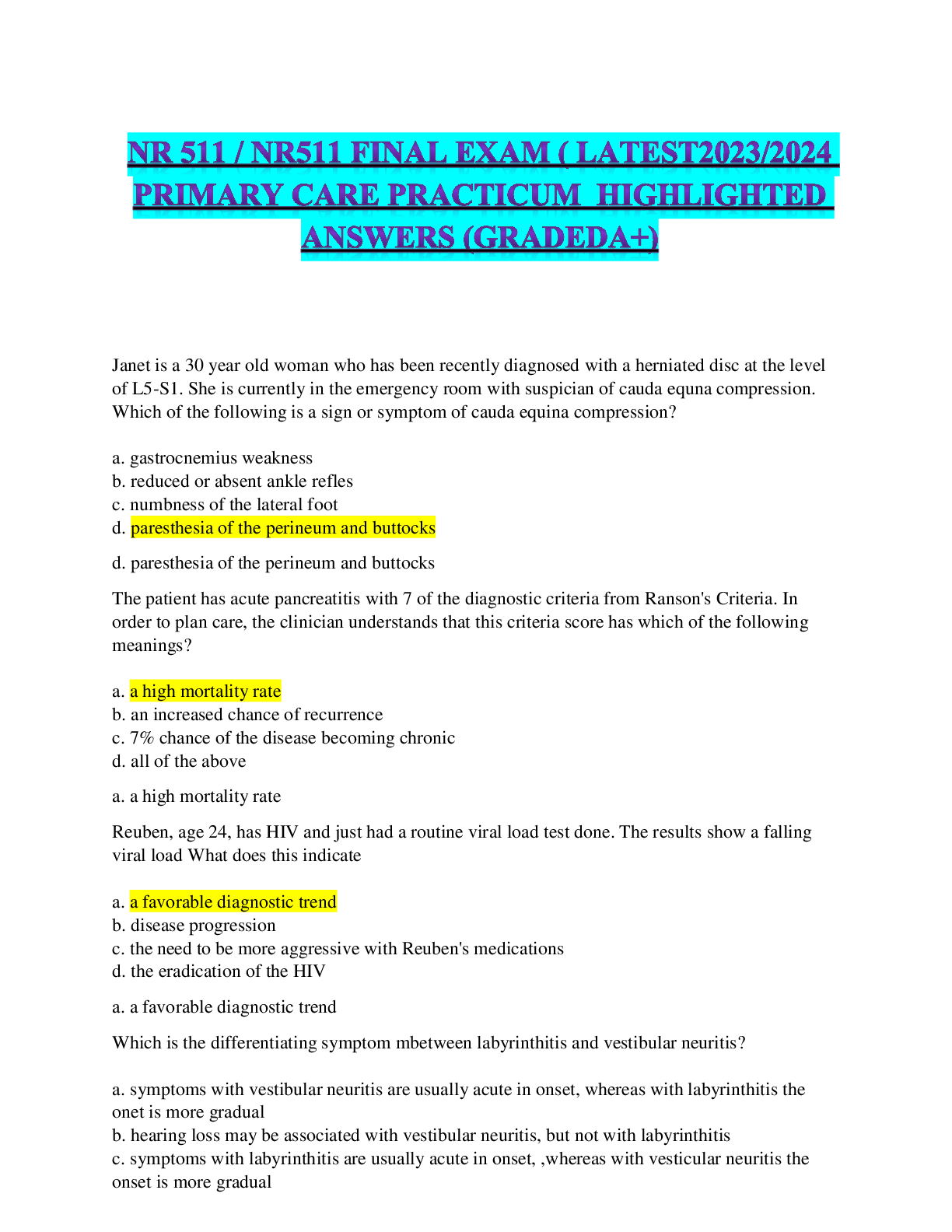
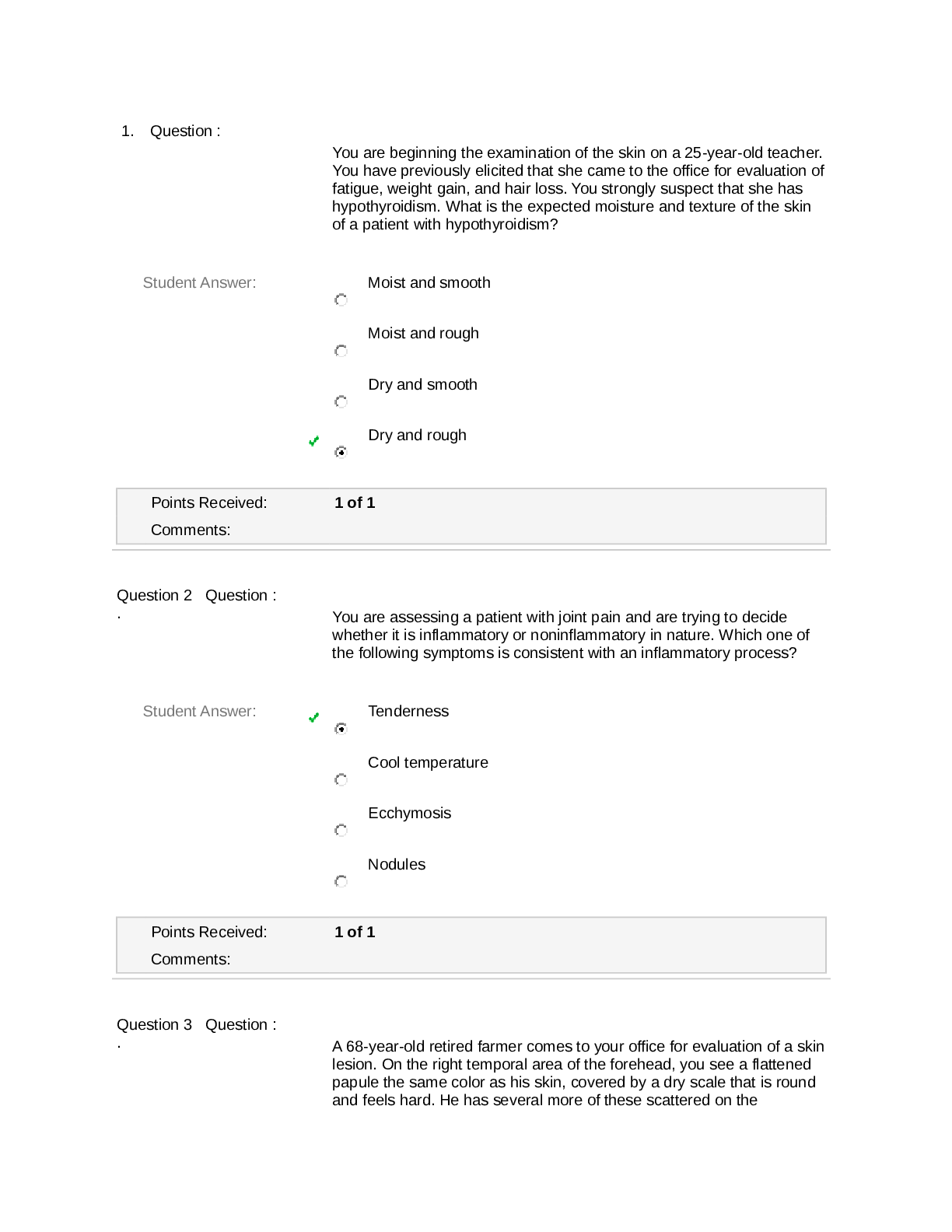
 (1).png)
